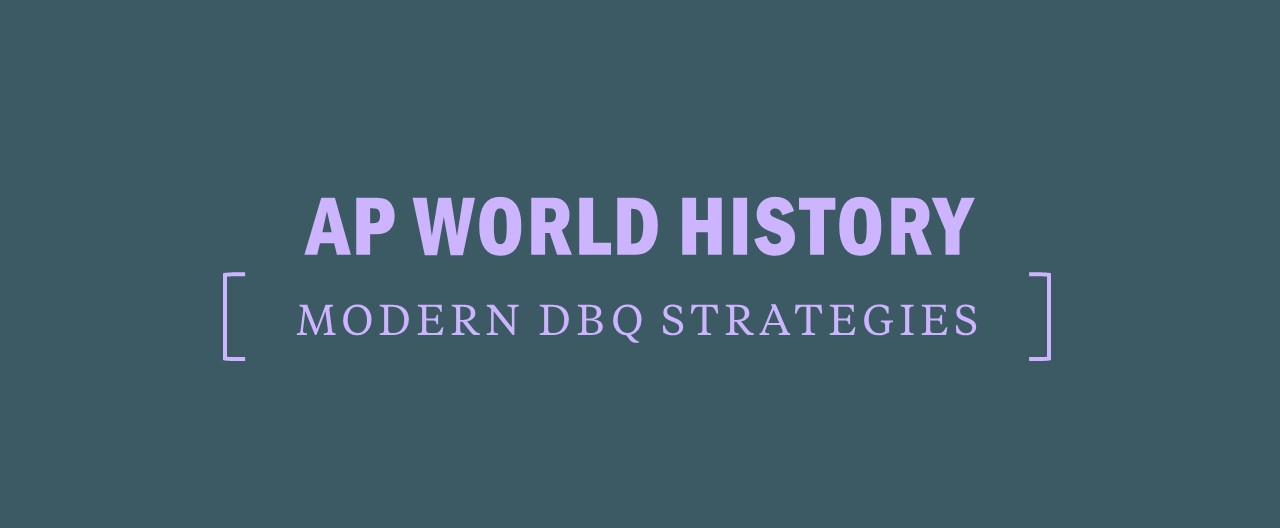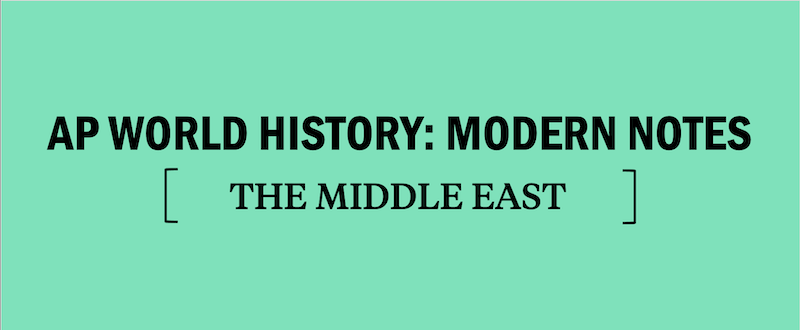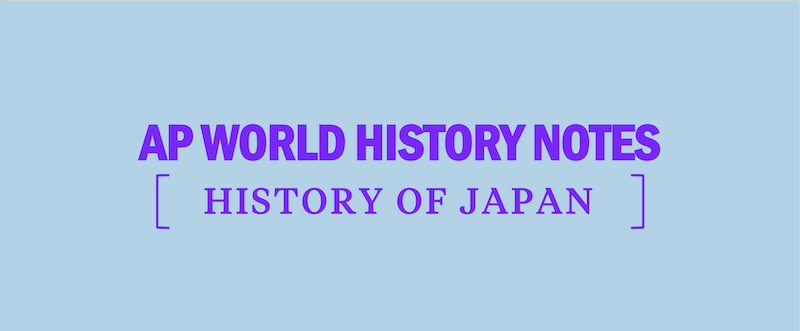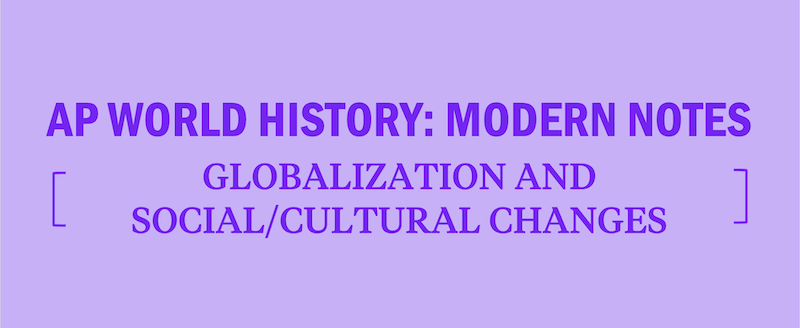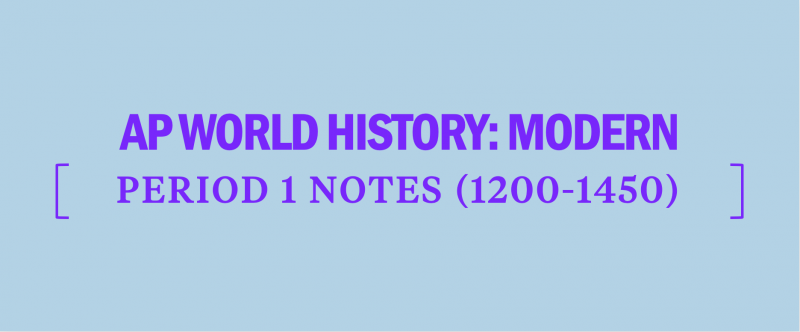How to Approach AP World History: Modern DBQs
Question 1 in Section II of the AP World History: Modern Exam is the document-based question (DBQ). It will always include seven documents offering a variety of perspectives on a historical development or process that took place between 1450 and 2001.
What does a high-scoring Document-Based Question response contain?
A Thesis
Make a thesis or claim that responds to the prompt. The thesis or claim must be based on historical facts and must establish a line of reasoning.
Context
Provide context relevant to the prompt by describing a broader historical development or process.
Evidence
Use at least six of the provided documents to support an argument in response to the prompt.
Additional Evidence
Use a historical example not found in the documents as evidence relevant to an argument about the prompt.
Sourcing
Explain how the context or situation of at least three documents is relevant to an argument. This could address the relevance of the document’s point of view, purpose, historical situation, and/or audience.
Complex Understanding
Demonstrate a nuanced understanding of an argument that responds to the prompt by using evidence to corroborate, qualify, or modify the argument.
While this may sound like a lot of factors to keep in mind, the strategies below will help you plan your response in such a way to address all the scoring requirements.
AP World History: Modern DBQ Strategies
Consider the following special strategies for the DBQ. Score requirements are highlighted in bold.
DBQ Strategy 1: Analyze the Prompt
- Most prompts will test one of the following historical reasoning skills: causation, continuity and change over time, or comparison. Look for keywords in the prompt that indicate which skill is being tested (for instance, “changes” often indicates continuity and change over time, while phrases such as “transformed” or “led to” often indicate causation); keep the skill in mind as you read the documents and consider organizing your essay according to the skill.
- Use the 15-minute reading period to read the documents and organize them into groups for analysis.
- Feel free to write notes in the test booklet and underline important words in both the source lines and the documents themselves. Nothing in the booklet is read as part of the essay scoring.
- Assume that each document provides only a snapshot of the topic—just one perspective.
- For each document, jot down brief notes to help you solidify your understanding of it. Use your notes to make your plan and write your essay. Take short notes about: the main idea(s) of the source, the purpose of the source (why it was written), and the background of the author and/or the context in which the source was created. Thinking about these factors will help you address several DQB requirements.
- Reread the prompt, thinking about how each of the documents relates to the prompt. Group the documents by their similarities: perhaps they present two or more major viewpoints, causes, or types of changes. When you plan the organization of your essay, each group may correspond with one body paragraph.
- If the 15-minute reading period has passed and you need a few more minutes to review the documents and organize your thoughts, go ahead! The 15 minutes is a suggested amount of time. That said, you will want to give yourself as much time as possible to write a thoughtful response.
DBQ Strategy 2: Plan Your Response
- Making a careful plan can help ensure that you address all the scoring requirements.
- Paraphrase your thesis statement. Knowing your claim will make it easier for you to plan an effective argument in your essay. In light of the documents, you must make a claim that demonstrates a line of reasoning in response to the prompt. Avoid statements that are vague or general (“The Industrial Revolution was very significant”), and make a specific claim that responds to the prompt using both the documents and your historical knowledge and sets up the rest of your essay (“The Industrial Revolution not only resulted in new capitalist economies but also brought about fundamental changes in social structures by creating new social classes and new roles for women”).
- Be sure your thesis or overall plan incorporates a complex understanding. You need to demonstrate that you have more than just a basic understanding of the content, so your essay should address the complexity of the historical development—perhaps by including multiple variables, by considering both causes and effects, or by making an insightful connection to another time period.
- Make a note about how you will provide context for the topic of the prompt. This may fit well in the introduction or first body paragraph.
- Make a simple outline of your body paragraphs; there will likely be one paragraph for each point you made in your thesis. (For instance, in the above example, there would be a paragraph each about changes in economies, social classes, and roles for women.) For each paragraph, consider these scoring requirements:
- List the documents you will use as evidence—remember that you must use six or seven to earn the maximum number of points for using the documents.
- Consider whether the paragraph is a good place to provide additional evidence—you must include one additional historical example.
- Think about when it would be beneficial to explain sourcing, or how a document’s context or situation is relevant to the argument—you must do so for three documents.
- Finally, review your plan and check off each requirement in your test booklet to ensure you addressed all six.
DBQ Strategy 3: Action! Write Your Response
- Nothing is more important in the first paragraph than the clear statement of an analytical thesis. The reader is most interested in seeing a strong thesis as soon as possible.
- Your thesis can be more than just one sentence. With the compound questions often asked by the DBQ, two sentences might be needed to complete the idea.
- Each paragraph should address one component of your thesis claim. Begin each paragraph with a clear topic sentence.
- Refer to the authors of the documents, not just the document numbers.
- Including short quotes is an effective way to use the documents to support your claims. However, avoid copying long sentences; use only the words or phrases that are relevant to your essay. The reader is interested in your ideas, not those of the documents’ authors.
- A good idea is to write a concluding paragraph that might extend your original thesis. Think of a way to restate your thesis, adding information from your analysis of the documents.
DBQ Strategy 4: Proofread
Skim for any glaring errors and, if you have time, check again to make sure your response meets each of the DBQ requirements.
NEXT: AP World History: Modern Sample DBQ

